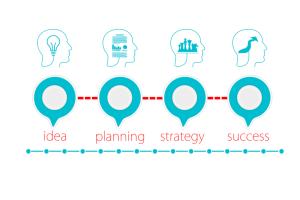Employee training is frequently an afterthought in strategic planning, treated as a formality without the foundational importance it should have. As a result, training does not drive engagement nor provide end usefulness, with surveys showing 70% of employees forget what they learned in training after just 24 hours. Fortunately, there are steps to take in order to enact a better employee training program.
Start at the Top
The effectiveness of an organization’s employee training program is greatly determined by the level of upper management support it has. As only 25% of senior management find learning and development to be critical to business outcomes, it’s no wonder that many companies struggle in this area. Executive buy-in is essential, and training programs can flourish when upper management recognizes the value of training, provides support, and participates in creating concrete objectives.
Moreover, it’s sometimes forgotten that senior management are employees too. Executive coaching and development training can evaluate and identify areas to refine in their skill set. Management decisions and actions directly shape the entire employee base, and as a result, proper training begins at the top.
Take Your Time
While technology has greatly improved efficiency in business, it has also created a culture seeking instant gratification and results. However, an employee training program is no place to cut corners for the sake of speed. Once a year training programs that cram everything into a single day do little to help employees retain knowledge. In fact, 45% of workers spend 15 minutes each week looking up information covered in employee trainings. Multiply that by each employee and the cost of failed training adds up quickly.
Setting a clear schedule of regular trainings throughout the year is one way to alleviate this challenge. It’s essential to adjust expectations to understand that an employee training program is a practice that improves end processes in small increments and, over time, can make a large impact.
Not limited to job-related-tasks, this mentality is also vital when training to prevent harassment and discrimination in the workplace. Such a topic is far too important to rush through, and one training every other year is not enough to reflect the severity of the matter. Old methods of addressing this and similar topics will only result in the same old results.
Provide One-on-One Training
An employee training program provides maximum effect on a worker when they can receive one-on-one, individualized training. While it is usually unfeasible to fully train every single employee separately, online/digital training is a cost-effective way to inject this strategy into a program. Only 16% of companies use online training methods that allow employees to work at their own pace. Supporting any amount of individualized training possible, even if trainings are broken down to the departmental level, will help increase effectiveness and raise comfort levels in employees.
Consider Safety & Wellness
Safety training should not be limited to manufacturing environments. IT and office settings contain subtle dangers that must be addressed. Extensive work at a computer can strain the back, wrists, and eyes, and training in appropriate ergonomics can guard against these hazards. Simply put, employees cannot be productive if they are unhealthy. Combined with legal requirements surrounding safety including OSHA changes and workman’s comp, employee wellness is a delicate area that all of the best employee training programs include. In addition to physical safety, instruction on staying safe online and protecting information in digital environments can assist in maintaining a healthy business environment.
Conduct Employee Surveys
Organizations tend to find it hard to evaluate the effectiveness of an employee training program. In an effort to gauge this and to also identify future areas of training focus, employee surveys hold tremendous value. Understanding employee engagement levels and workplace culture is an important gauge of what’s currently working or not working and can determine the effectiveness of all the above areas. When the value of the employee perspective is overlooked, training and subsequent performance suffer.
Enacting a Better Employee Training Program
The desire to improve an existing employee training program or implement a brand new one is a great start, but following through on every step can still prove difficult. Turning to training experts can help you achieve business growth by bringing effective methods, technology, and surveys into your organization.
Business & Finance Articles on Business 2 Community(64)






